England continued
As you now know, we became members of the National Trust and visited many a castle, manor, park and gardens. All of them have a story. To avoid telling too many and therefore fastly creating boring snippets, I am taking the opportunity of telling about two castles in more detail.
(Homes as very few could build today)
1. In northwest Wales lies the Conwy valley, where around 1500 a castle was built and extended in the decades following. By 1920 most of its content was auctioned off and the process of deterioration began. It would have become one of the many ruins scattered all around Britain, if not for a young couple, who bought it with their savings, mortgaging themselves into a life of poverty, with the goal of restoring this castle to its former glory.
(The breakfast room)
We stayed in this castle for 4 days as guests of Peter Welford, a Londoner and his now wife Judy Corbett, who grew up in the region and had visited the castle as a child.
(The furniture found in here was not auctioned off. The place was used for parties in the late eighties. The yellow paint dates from then)
This is the story of Gwydir Castle, not only a 2 bedroom B&B, but for 6 pounds you can also visit the castle and gardens on a day pass.
It seems again and again, that setting up a dynasty requires that one serves the King or Queen, go abroad and fight some battles successfully, and when back with title and land grants, father many children. Meredith Gwynn, the founder of the Gwydir dynasty, fathered 30 children by 3 wives and 4 concubines, while enlarging the house (by Jove with such a growing "family" one has no choice!).
During the generations to follow, they successfully maneuvered thru the Tudor and Stuart causes, but lost in the Cromwell era by being royalists.
(Formal Gardens stretch out and were created and are maintained by Peter and Judy and one Gardener)
There are of course ghosts on the premises, and peacocks strutt around the gardens.
Judy Corbett wrote a book about their castle restoration "castles in the air", in which she details her many first bone cold wet nights in their newly acquired castle, with scurrying rats and flying bats, with no electricity, fighting with machetes the overgrown wilderness that occupied the premises, wondering whether they had just made the biggest mistake in their lives.
(This pond and English gardens surrounding it are so British - organized chaos)
She recounts, that after a few weeks she could find blindly in the dark the buckets and pans put out to catch the rain, as she got to know the walls of the castle feeling her way around. And how the success of their hard manual labor in cleaning up the place and patching the leaking roofs little by little was measured by bringing the number of buckets to be emptied down from 36 to 16 after a few months. The book is well written and can be found at Amazon.
(I couldn't get enough of the beautiful Gwydir setting)
I was fascinated by this story, especially meeting Judy and seeing what they have accomplished since that day of purchase in 1994. Now they are, although still money poor, in valuing this property they privately own: millionaires.
The most wonderful story about the restoration and the reason why Prince Charles showed up, is a 1921 auction catalogue neighbors gave them when they moved in in 1994. The dining room lot, comprising of 1640's panelling, door case, fireplace and leather wall coverings, was bought by Randolph Hearst for his faux castle in California, but he died soon afterwards and the heirs eventually sold the unopened crates to the New York Metropolitan Museum Of Art.
(The restored dining room, which Prince Charles came to officially re-open)
Peter and Judy were able to negotiate a repurchase, to restore the dining room in its original form, and Judy tells the story how they were blindfolded and driven to a secret storage facility in Brooklyn, where they witnessed the opening of the original crates so they could see what they were purchasing.
(The impressive door panelling was fully intact)
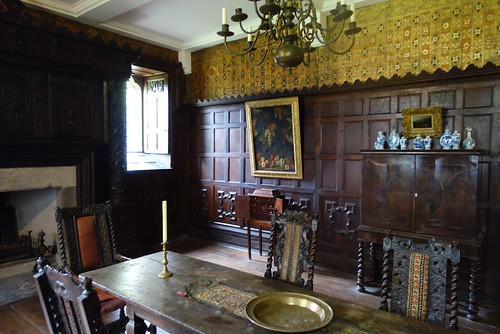
(The gold wall covering is leather)
Judy recalls that the smell of Gwydir emanated from the open crate as she peered in closer to inspect. She told us that they are still using that auction catalogue to find other original furnishings, in the hope to bring them back home to Gwydir.
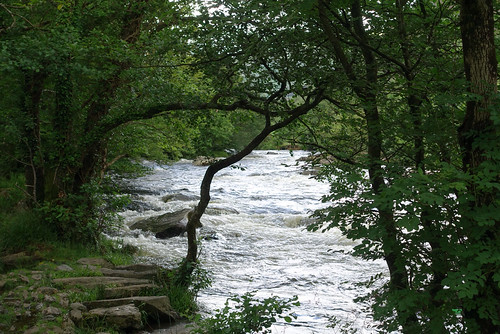
(There was nothing coy about Bess's display of wealth)
2. Now the second story as told to us during our visit to Hardwick Castle and its most formidable occupant Bess, or formally named, Elizabeth Talbot, Countess of Shrewsbury, who was born in poor circumstances - her father made it to Esquire and left mother and 4 daughters nothing when he died.
She married four times, starting at the age of 13, amassing more and more wealth and titles along the way and ended up feuding with her last husband, who when he died had made her so rich that she became the second richest person in the U.K., behind the Queen, Elizabeth I. An annual income of 10,000 pounds in 1590 could be recalculated to about 1.5 million to 2 million pounds today.
(Guest bed)
Queen Elizabeth made Bess and her last husband caretakers (a nice word for jailers) of Mary, Queen of Scotts, for 17 years. Bess's granddaughter Arabella almost became queen after Elizabeth died, but in the turmoil that ensued James I became king. Princes William and Harry are descendants of Bess from both sides of the family.
(Bedroom of Evelyn, 9th Duchess of Devonshire)
Hardwick has Bess's initials on top of the Hall. The building is more glass than brick. (Bess owned glass factories)
(35000 acres / 140 sq km of the Duke are now retained in trust of the total of 83000 acres / 340 sq km of original holdings)
I am fascinated by the stories about all the nobles, whose premises we visited and the imagination runs wild, when wandering through the rooms and halls of bygone eras. The whole Downton Abbey TV series comes alive all around you.
I know this blog feels like a history lesson and where is Erik's personal input?
Well may the pictures AGAIN rescue my blog.







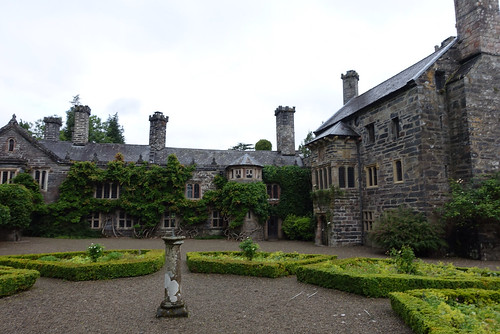



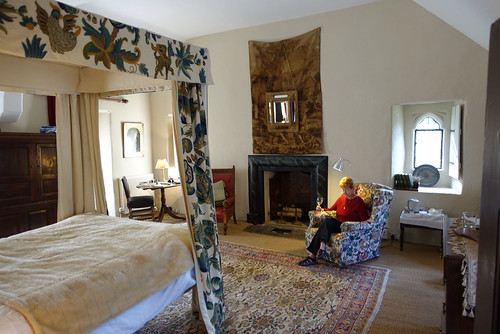

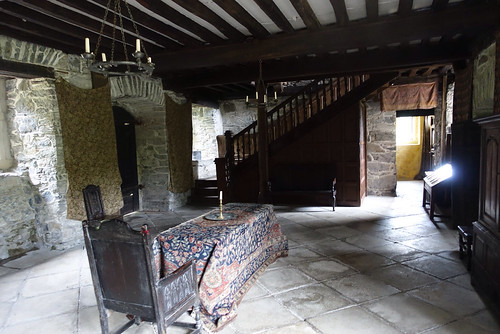
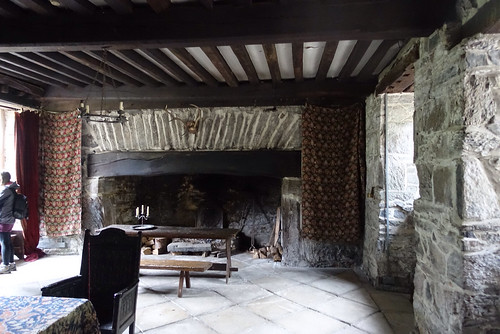
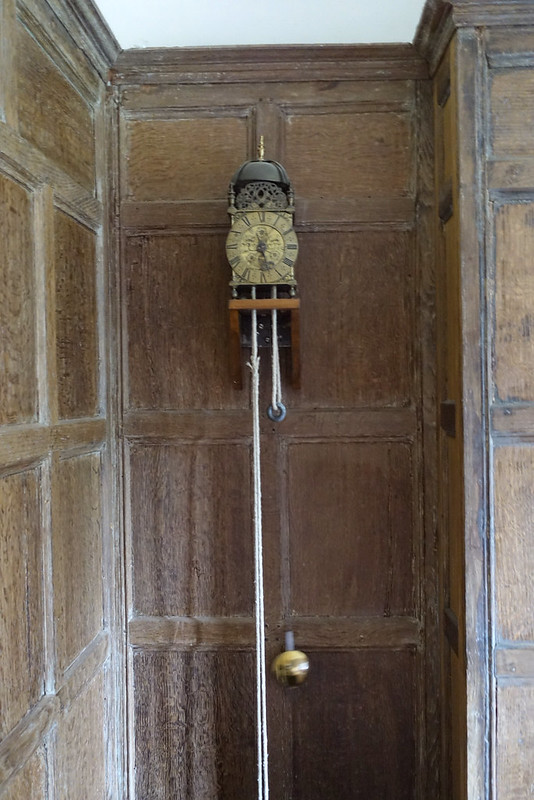
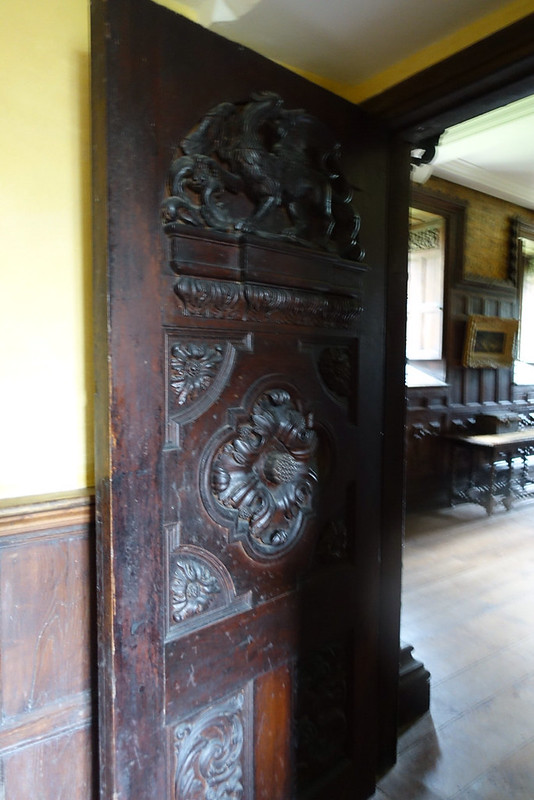
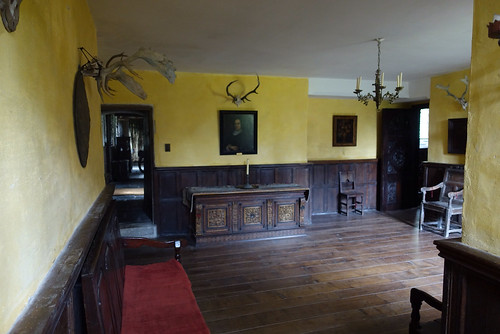
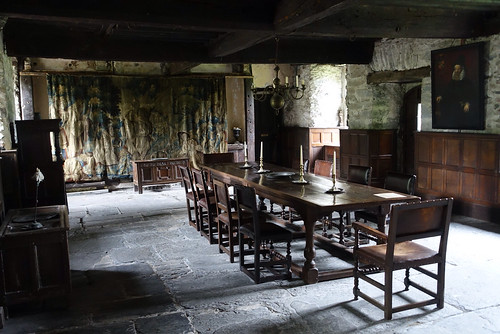
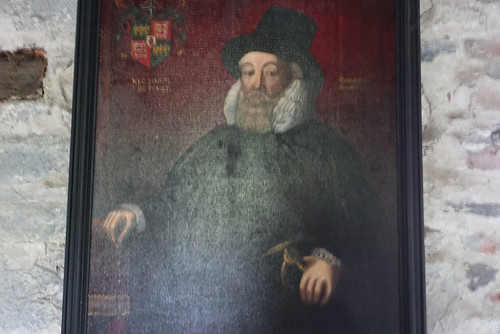
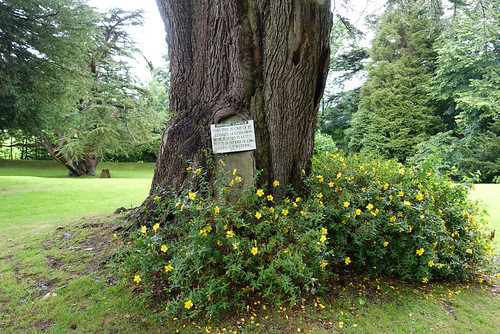
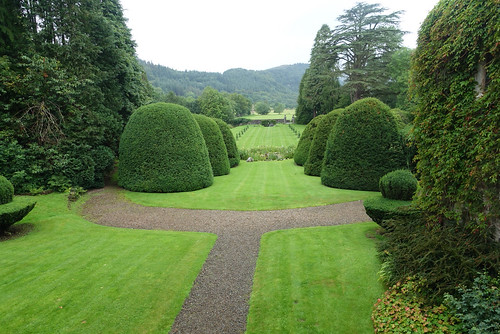
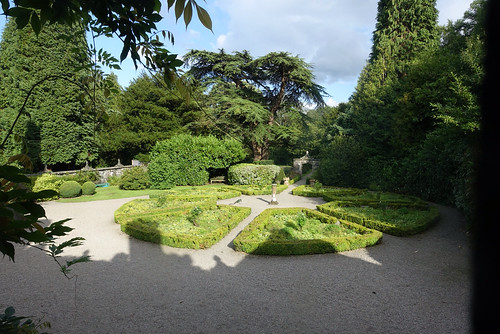
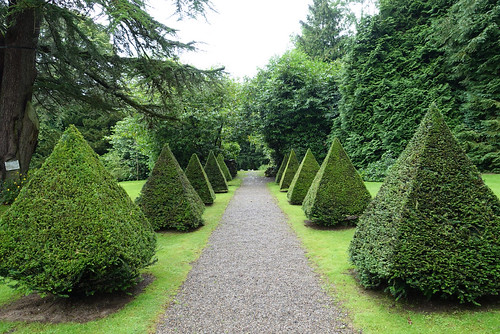







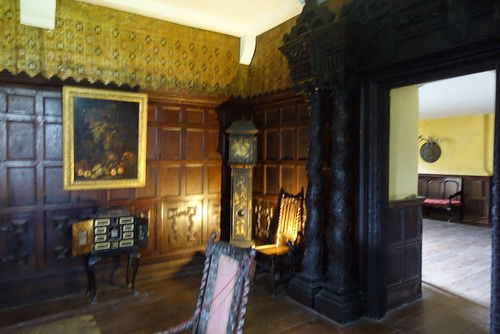

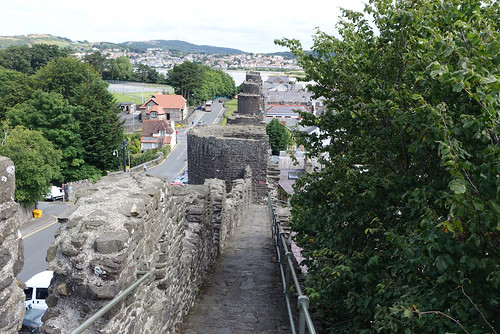

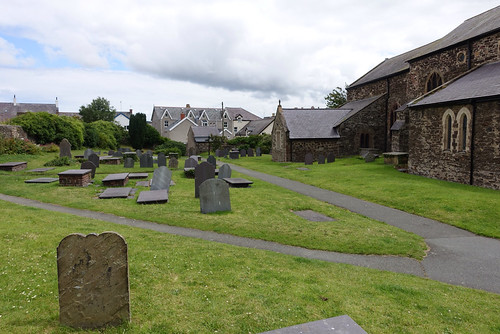

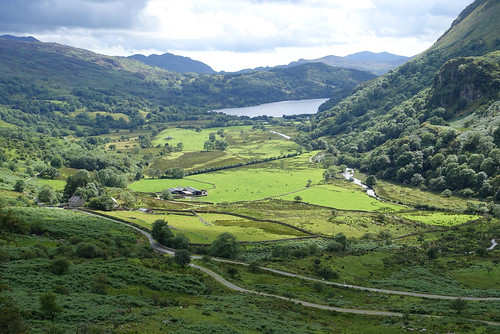
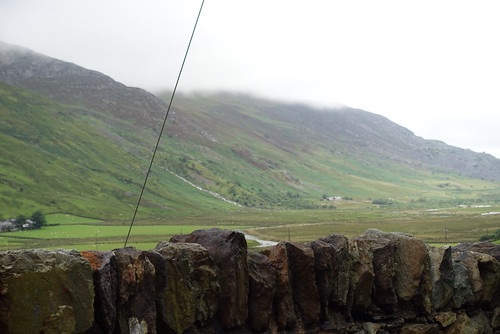




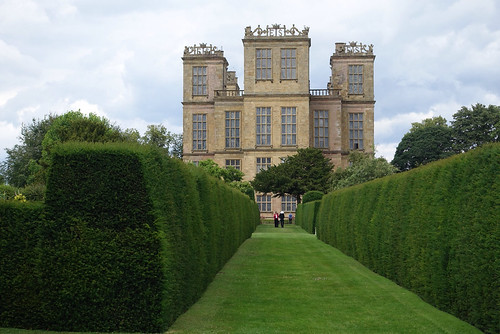

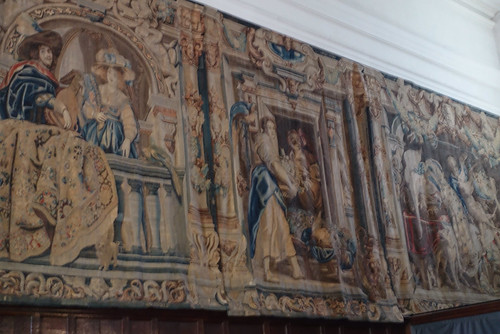

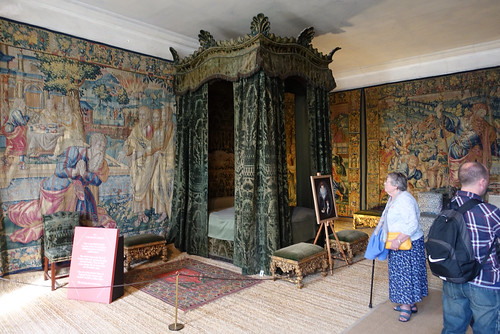
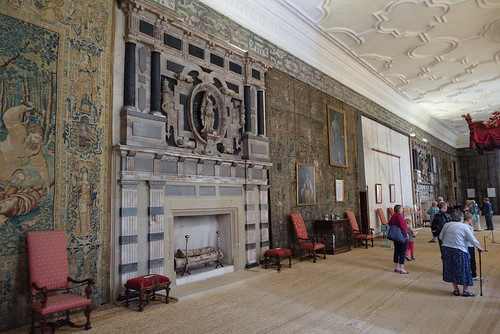
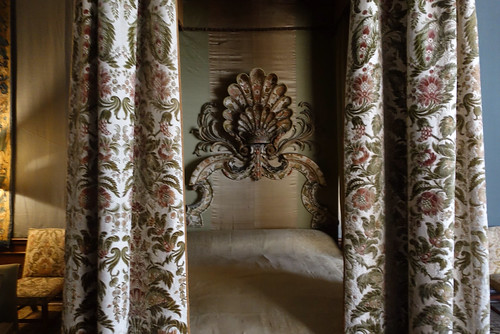


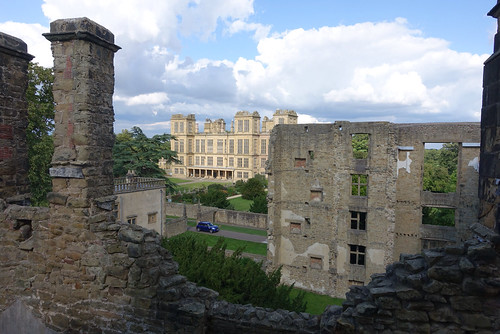

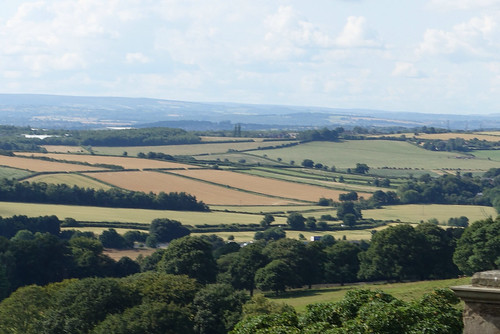




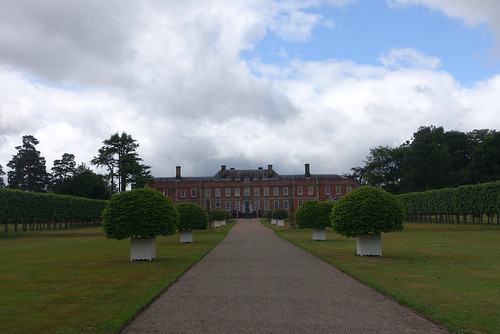




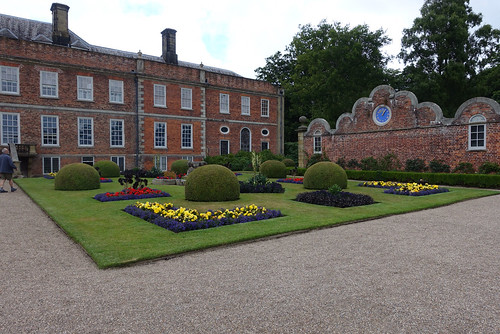

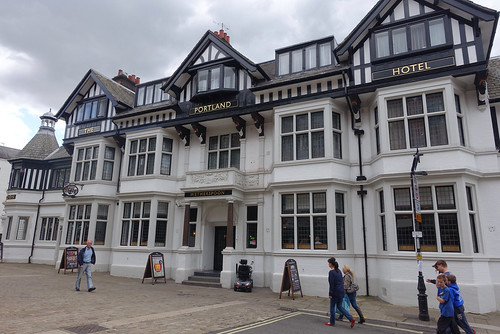
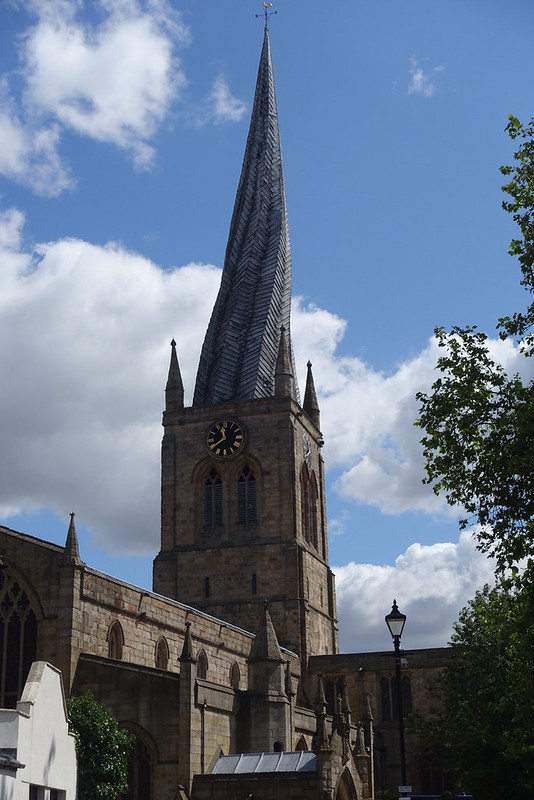
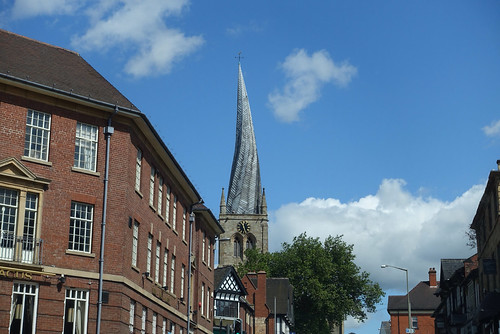


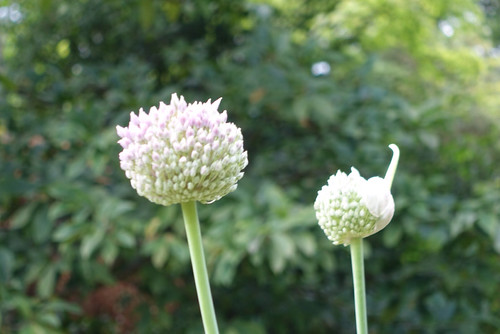


Comments
Post a Comment